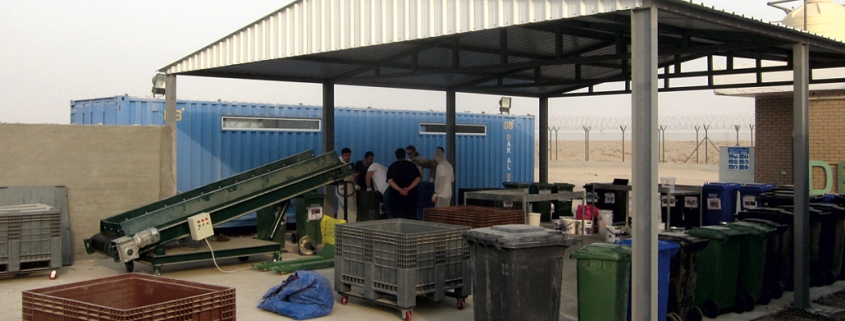National Waste Masterplan for the Emirate of Kuwait
The State of Kuwait has taken action and commissioned a draft of a waste management plan for the country issued by the Kuwaiti Environment Public Authority.
The assignment went to the Recycling Management Department of the Germany-based Fraunhofer Institute for Environmental, Safety and Energy Technology (UMSICHT). According to the information, the project (volume: 18 million Euro) began in January 2017 and will run for four years until 2021.
In October last year, Fraunhofer UMSICHT began investigating the quantities, compositions and recycling routes of waste in Kuwait. The German scientists and the on-site team in Kuwait started up a sorting station for household and household-like waste at the decommissioned Jleeb landfill to obtain accurate information about its composition and chemical properties. “The data obtained will then be used to identify the appropriate strategy for future waste management,” Fraunhofer UMSICHT gave account. “This involves, among other things, the material value and pollutant contents as well as the combustion properties of the waste. The waste is divided into three-grain size ranges by screening and into more than 50 different fractions by manual sorting. In order to ensure a high scientific standard, the sorting personnel is comprehensively trained.”
The four-year project consists of several phases. The first stage is a comprehensive inventory and collection of primary data. In addition to municipal waste also commercial and industrial waste, construction waste, agricultural waste, hospital waste, industrial wastewater and sewage sludge is examined with regard to volume, composition, sources and disposal routes. For this analysis, the sorting station at the Jleeb landfill was built.
In the second phase, the landfills of the country are explored regarding their extent, composition and the hazard potential for humans and the environment. In addition to the simulation of landfill gas and seepage water quantities, drilling is also carried out, and gas, seepage water and groundwater measuring points are set up. Furthermore, geophysical investigations are conducted, and waste samples are taken.
In a third step, a web-based, interactive geoinformation system (Environmental Monitoring Information System of Kuwait, eMISK for short) is to be developed to make the data usable for authorities and government and to inform the public. “This system will enable individualized situation analyses, graphical data evaluation and the localization of waste producers, waste treatment plants and landfills,” Fraunhofer UMSICHT informed. “The aim is to create an information system, which provides real-time data on the environmental situation of all sites of landfills and waste facilities. In addition, the eMISK monitoring system should display exceeded limit values or make the path of the waste visually traceable – all this conveniently via smartphone!”
As reported, in the last phase of the project, a national waste management plan for the State of Kuwait will be drawn up. “To this end, the existing legal framework of the country will be further developed, and a financing model for the implementation of the waste management plan will be created. A roadmap sets waste management targets, indicators and action plans for the implementation of waste prevention and recycling measures and for the remediation of landfills over the next 20 years.”
Photo: Fraunhofer UMSICHT
GR 12019











